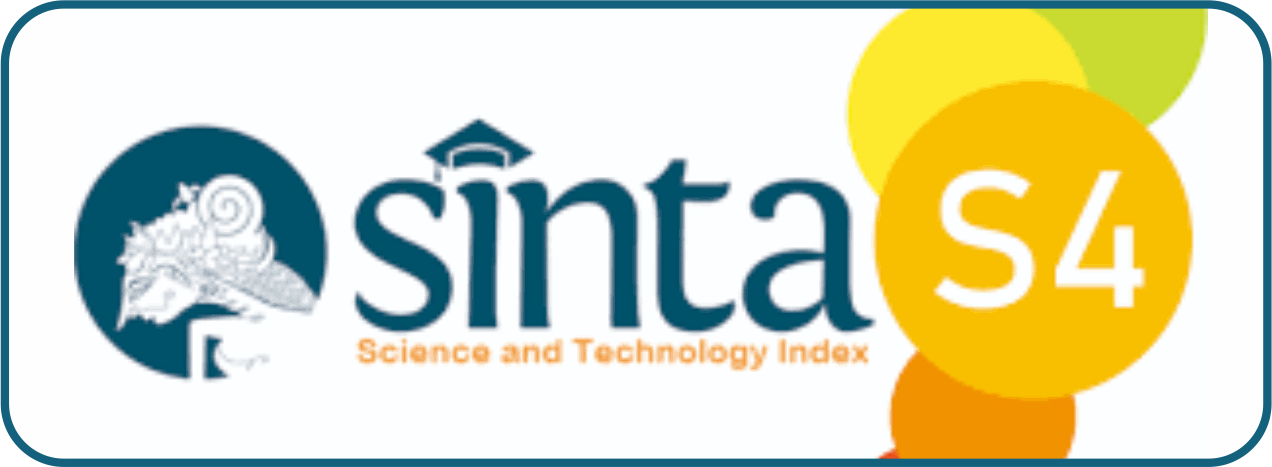Redesigning the User Interface of a Language Translation App to Enhance User Experience Using Design Thinking
Abstract
Language translation applications have become essential tools for supporting cross-language communication and are useful in daily and professional life. Naver Papago is a language translation mobile-based application that utilizes Artificial Intelligence technology. However, the application has a less intuitive interface, which limits users' ability to use its features effectively. The purpose of this study is to redesign the user interface of the Naver Papago mobile-based application to improve user experience. This study uses a Design Thinking approach that prioritizes user needs through five key stages: Empathize, Define, Ideate, Prototype, and Test. In the final stage, the prototype was evaluated by 13 respondents with a usability testing approach and using the Maze platform. Participants were asked to complete 10 representative tasks to assess the functionality and usability of the redesigned prototype. The Maze usability score reached 71%, placing it in the medium category.
Keywords
Full Text:
PDFReferences
Aisyah, K., Sunardi, S., & Nur, A. D. (2024). Opportunities for Using Smartphone in the Digital Age Literacy to Facilitate Students in Learning English Language at Junior High School. Advances in Social Science, Education and Humanities Research. doi:10.2991/978-2-38476-301-6_2.
Widdowson, H.G. (2014). The Role of Translation in Language Learning and Teaching. In: House, J. (eds) Translation: A Multidisciplinary Approach. Palgrave Advances in Language and Linguistics. Palgrave Macmillan, London. doi:https://doi.org/10.1057/9781137025487_12.
Milda, N.S., Muhammad, B., & Andi, Muliati. (2023). The Effect of Google Translate Application on English Vocabulary Mastery of High School Students. Journal of English Education and Literature. doi:https://doi.org/10.26858/performance.v2i2%20May.46294.
Hind, A., & Dania, S. (2023). The Impact of Translation Apps on Translation Student’s Performance. Journal of Education and Information Technologies, 10709-10729. doi: https://doi.org/10.1007/s10639-023-11578-y.
Yan, Q., & Rui, X. (2024). Research on User Interface Design and Interaction Experience: A Case Study from “Duolingo” Platform. EAI Endorsed Transactions on Scalable Information System, 11(5). doi: https://doi.org/10.4108/eetsis.5461.
Shah, A., & Nasnodkar, S. (2021). The Impacts of User Experience Metrics on Click-Through Rate (CTR) in Digital Advertising: A Machine Learning Approach. Sage Science Review of Applied Machine Learning, 4(1), 27–44.
N. Aulia, S. Andryana, and A. Gunaryati. (2021). Perancangan User Experience Aplikasi Mobile Charity Menggunakan Metode Design Thinking User Experience Design Of Mobile Charity Application Using Design Thinking Method. J. Sisfotenika, vol. 11, no. 1, pp. 26–36, 2021.
G. Karnawan. (2021). Implementasi User Experience Menggunakan Metode Design Thinking pada Prototype Aplikasi Cleanstic. Jurnal Teknoinfo, vol. 15, no. 1, p. 61, Jan. 2021, doi: 10.33365/jti.v15i1.540.
Interaction Design Foundation. The Basics of User Experience Design.
Juniantari, M., Ulfa, S., & Praherdhiono, H. (2023). Design Thinking Approach in the Development of Cirgeo’s World Media. Jurnal Nasional Pendidikan Teknik Informatika: JANAPATI, 12(1), 42-55. https://doi.org/10.23887/janapati.v12i1.55203.
Schweitzer, J., Groeger, L., & Sobel, L. (2015). The Design Thinking Mindset: An Assessment of What We Know and See In Practice. Journal of Design, Business & Society, Forthcoming, Available at SSRN: https://ssrn.com/abstract=2647299.
Leem, S., & Lee, S.W. (2024). Fostering Collaboration and Interactions: Unveiling the Design Thinking Process in Interdisciplinary Education. Thinking Skills and Creativity. https://doi.org/10.1016/j.tsc.2024.101520.
Zamakhsyari, F., & Fatwanto, A. (2023). A Systematic Literature Review of the Design Thinking Approach for User Interface Design. International Journal on Informatics Visualization. doi: http://dx.doi.org/10.62527/joiv.7.4.1615.
Ilham, H., Wijayanto, B., & Rahayu, S.P. (2021). Analysis and Design of User Interface/User Experience with the Design Thinking Method in the Academic Information System of Jenderal Soedirman University. Jurnal Teknik Informatika (Jutif), vol. 2, no.1 pp. 17-26, Jan. 2021, doi: https://doi.org/10.20884/1.jutif.2021.2.1.30.
Subarjah, V.A., & Wahyu, A.P. (2022). Analysis and Design of User Interface and User Experience of Regional Tax Enterprise Resources Planning System with Design Thinking Method. Inform: Jurnal Ilmiah Bidang Teknologi Informasi dan Komunikasi, vol. 7, no.2, pp 96-106, Jul. 2022, doi: https://doi.org/10.25139/inform.v7i2.4729.
Suratno, B., & Shafira, J. (2022). Development of User Interface.User Experience using Design Thinking Approach for GMS Service Company. Journal of Information Systems and Informatics, vol. 4, no. 2, pp 469-494, 2022, doi: https://doi.org/10.51519/journalisi.v4i2.344.
Saputra, D., & Kania, R. (2022). Designing User Interface of a Mobile Learning Application by Using a Design Thinking Approach: A Case Study on UNI Couse. Journal of Marketing Innovation (JMI), 2(2). https://doi.org/10.35313/jmi.v2i2.36.
Darmawan, I., Anwar, M.S., Rahmatulloh, A., & Sulastri, H. (2022). Design Thinking Approach for User Interface Design and User Experience on Campus Academic Information Systems. JOIV: International Journal on Informatics Visualization, vol. 6, no. 2, p. 327, Jun 2022, doi: https://doi.org/ 10.30630/joiv.6.2.997.
Rinawiyanti, E., Surjani, R., Hartono, M., Permatasari, E., & Chrisma, A. (2024). Mixed Method Usability Testing for User Experience and User Interface of AI-Based Supermarket Applications. Journal of Applied Data Sciences, 6(1), 483-495. doi:https://doi.org/10.47738/jads.v6i1.453.
J. R. Lewis, and J. Sauro. (2021). Usability and User Experience: Design and Evaluation, In Handbook of Human Factors and Ergonomics (eds G. Salvendy and W. Karwowski), NJ, USA: Wiley, 2021, https://doi.org/10.1002/9781119636113.ch38.
Liu, C., Song, X., & Hansen, P. (2023). Characterising users’ task completion process in learning-related tasks: A search pace model. Journal of Information Science, 49(6), 1462-1480. doi: https://doi.org/10.1177/01655515211060527.
P. Weichbroth. (2024). Usability of Mobile Applications: A Consolidated Model, IEEE Access, vol. 12, no. April, pp. 62378–62391, 2024. doi: https://ieeexplore.ieee.org/document/10510383.
DOI: https://doi.org/10.17509/coelite.v4i2.85777
Refbacks
- There are currently no refbacks.
Journal of Computer Engineering, Electronics and Information Technology (COELITE)
is published by UNIVERSITAS PENDIDIKAN INDONESIA (UPI),
and managed by Department of Computer Enginering.
Jl. Dr. Setiabudi No.229, Kota Bandung, Indonesia - 40154
email: coelite@upi.edu
e-ISSN: 2829-4149
p-ISSN: 2829-4157




